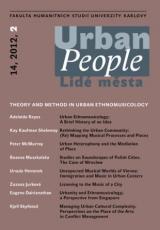Urbanity and Ethnomusicology; a Perspective from Singapore
DOI:
https://doi.org/10.14712/12128112.3516Klíčová slova:
Xinyao, Vedic Metal, Singapore, urbanity, ethnomusicologyAbstrakt
Although Bruno Nettl's reassurances that concerns within ethnomusicology have not necessitated the addition of the prefix "new" to the discipline, we are reminded that the discipline, exemplified in fieldwork and musical practices explored and examined, could benefit from continued questioning of underlying assumptions (Stock 2008). Ethnomusicological studies, for example, tend to situate the affects and effects of urban/ity in particular ways that pose considerable challenges for an inevitably heterogeneous urban setting. On the other hand, an urban environment studied qualitatively is a potential revelation of intersections of socio-cultural, political, economic and musical trajectories. Urban environments can therefore be studied as interactions between sites of dwelling and acts of dwelling. If musical practices and communities-of-practice are embodied relationships, then the body as sensorium is a potentially rich site and act of heterogeneous dwellings, making soundscapes ways of understanding embodiment of practice/s in urban/ity. If ethnomusicology claims involvement and observation in and of musical behaviors, musical practices can be discerned through spatial dynamics between acts of dwelling and sites of dwelling. Studies in ethnomusicology could then be extended to cultures whose points of origin are sites and acts of urban/ity. Using two musical practices, Xinyao and Vedic Metal, from the city-state Singapore, I offer a perspective on the prospects and challenges in negotiating urbanity in ethnomusicology in theory and practice.
Stahování
Publikováno
Jak citovat
Číslo
Sekce
Licence

Tato práce je licencována pod Mezinárodní licencí Creative Commons Attribution-NonCommercial-NoDerivatives 4.0.


